A detailed look into the cave paintings of our fellow hunter gatherer’s from 40 000 BCE!
Humans like to leave a mark. It doesn’t matter if we were born thousands of years ago or just a few years ago, we all want to be seen and heard. And so we build monuments, send stuff into space and of course, produce endless amounts of art. Today, art takes various forms, but 40 000 years ago, it all started on a cave wall.
The Significance and Reason Behind Cave Paintings
Today, Graphic Designers know that their role is more than just creating pretty images. Their purpose is to communicate a message. Well, whether consciously or subconsciously, the hunter gatherers of 35 000 BCE seemed to do just that with their markings of animals, human-like figures and handprints. They were communicating their perception of the world, values and ideas. Seen below, are the paintings from the Chauvet Cave in France.
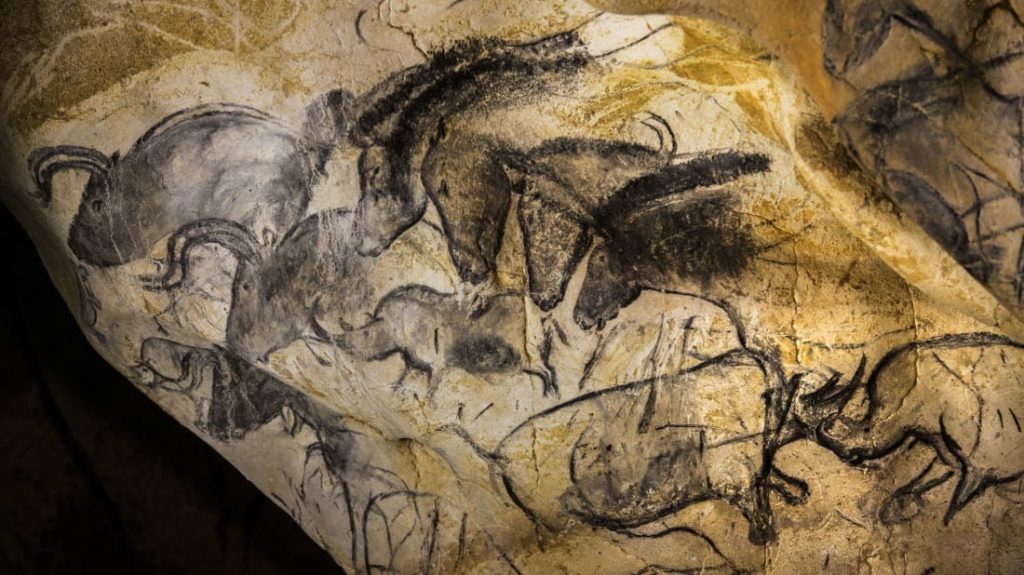
Image Source: https://www.mentalfloss.com/article/577563/chauvet-cave-paintings-facts
As you can see, the paintings consist of animals (a predominant theme in cave paintings) such as horses and rhinoceroses. There are many theories as to why they chose to depict animals. One such theory claims that they drew animals due to the belief that it would somehow make the real animals come to them. which they could then use as prey. However, we see that this may not be the case as not all animals they drew can be used as food. Another theory states that these paintings were a form of ritual or spiritual activity. It could also be that the animals were painted to notify the next group of cave dwellers about which one’s were dangerous or to simply keep a track of the animals in that particular area.
Either way, we see that the paintings were deliberate choices made by human beings (not much different to what designers do today). In fact, most cave paintings, whether they are in Indonesia, South Africa or France, include animals. Despite the distance that separated these groups of humans, they all thought drawing galloping and fighting animals was the way to go! It shows us that we are much more alike than we had ever thought. In fact, do you know what’s in common between a 2 year old child born in 2019 and a cave dweller from 40 000 BCE? Both love handprint painting!
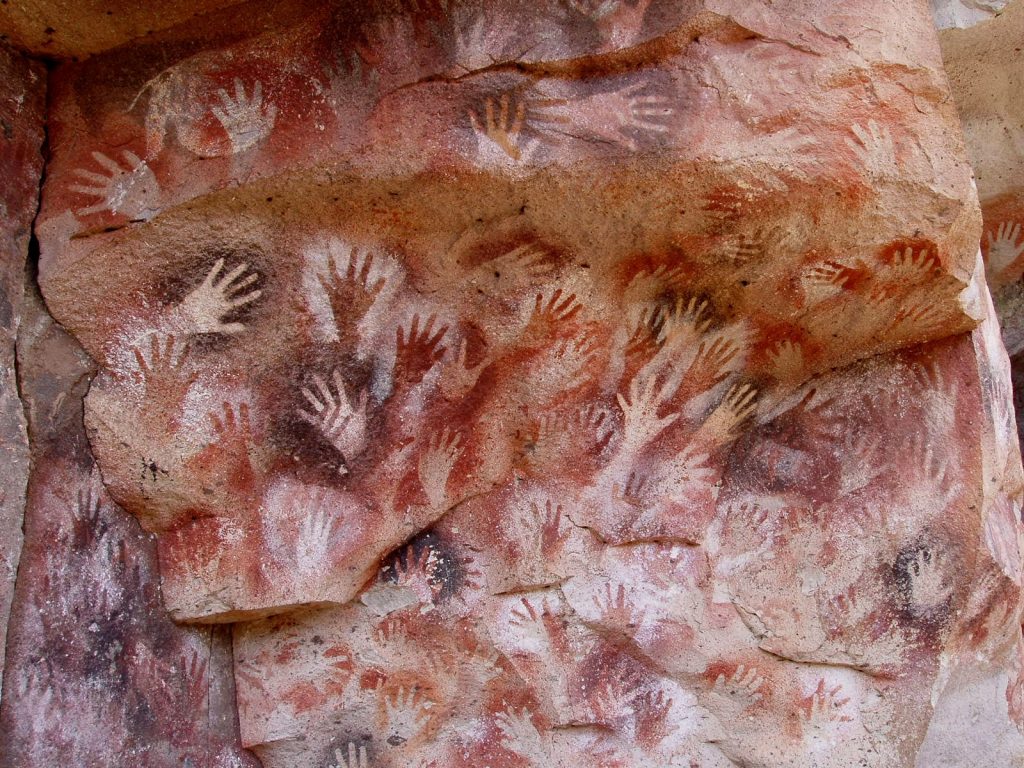
Image Source: https://en.wikipedia.org/wiki/Cueva_de_las_Manos
The Art of Perspective and Movement
What I find most fascinating about these hunter gatherer’s is that they seemed to have figured out the techniques of perspective and movement long before Brunelleschi and the rest of the European artists did! Seen below, is a painting of bison crossing each other that indicates that the painters seemed to understand perspective (one bison is in the front, the other behind it). For a deeper analysis into the use of foreshortening seen here, check out this article: https://mindfuldrawing.com/2019/08/07/crossed-bison-of-lascaux-art-study-through-drawing/
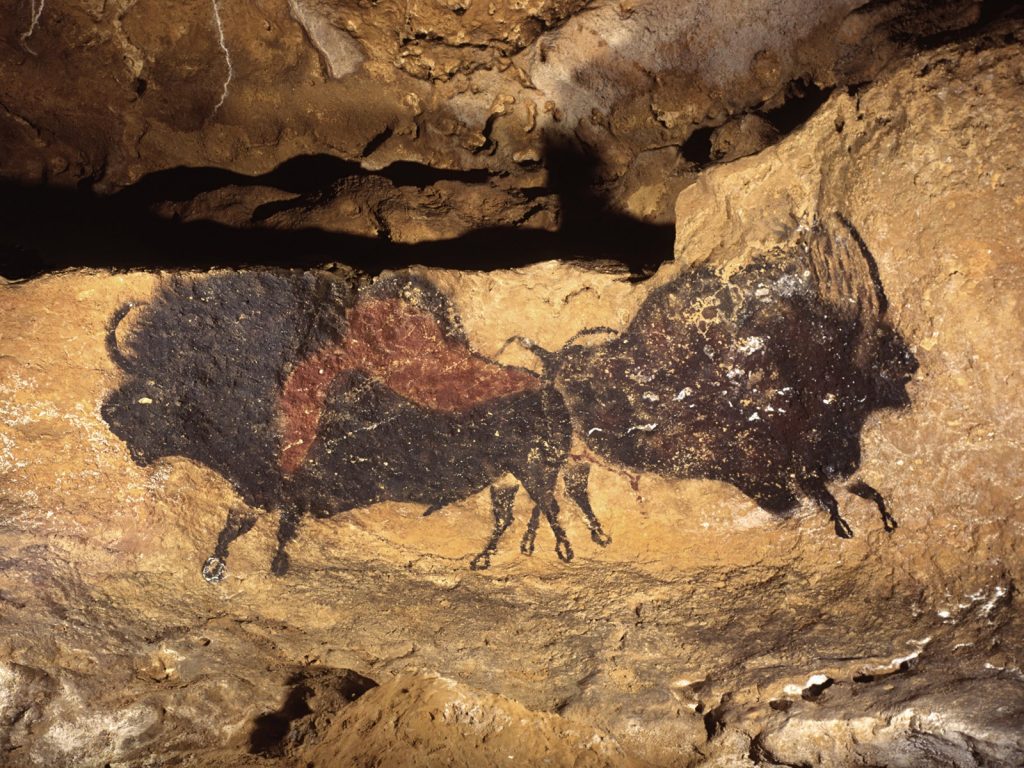
Image Source: https://mindfuldrawing.com/2019/08/07/crossed-bison-of-lascaux-art-study-through-drawing/
Moreover, the paintings shown here indicate that they understood the art of displaying movement and telling a story through a scene. Notice the placement of the animals (some are in the front, others far behind) and the depiction of the animals’ legs to show that they’re running.
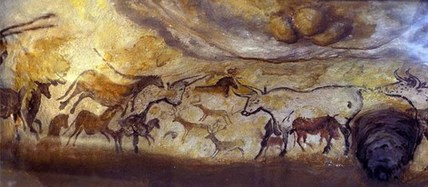
Image Source: http://besmarttakeart.weebly.com/artist-of-the-week/artist-of-the-week-2
Types of Rock Art and the Materials Required:
Rock Art is usually categorized into two types: Pictographs (exact images of objects drawn on the wall using various pigments) and petroglyphs (marks carved onto rocks).
Paint: Red and yellow pigments were made with clay and other minerals mixed together. Black pigment was created from charcoal or manganese oxide and white pigment was created from lime. These were sometimes mixed with water or other liquids to create paint.
Brushes: They used feathers, animal hair, twigs and even their fingers to paint. Handprints were made by putting their hand on a wall and applying pigment over it.
Stones: Different types of stones were used to make incisions into the walls to create petroglyphs.
All of this tells us that humans were long capable of thinking strategically and making use of their limited materials. In fact, they even had ‘recipes’ on how to make certain kinds of paint and made good use of common materials such as animal fat, blood and juices from plants.
What to Take Away
Overall, by taking a closer look at these cave paintings, we can understand that early humans were a lot more intelligent and similar to us than we had thought. Perhaps art is an innate ability common to all of humankind and it is only the style that differs throughout different time periods. It’s important to acknowledge that these paintings are not just silly, primitive marks. They represent a group of people, a whole set of values and ideas. We all have our differences, but when looking at the big picture, it’s clear that humankind is much more connected than we think!
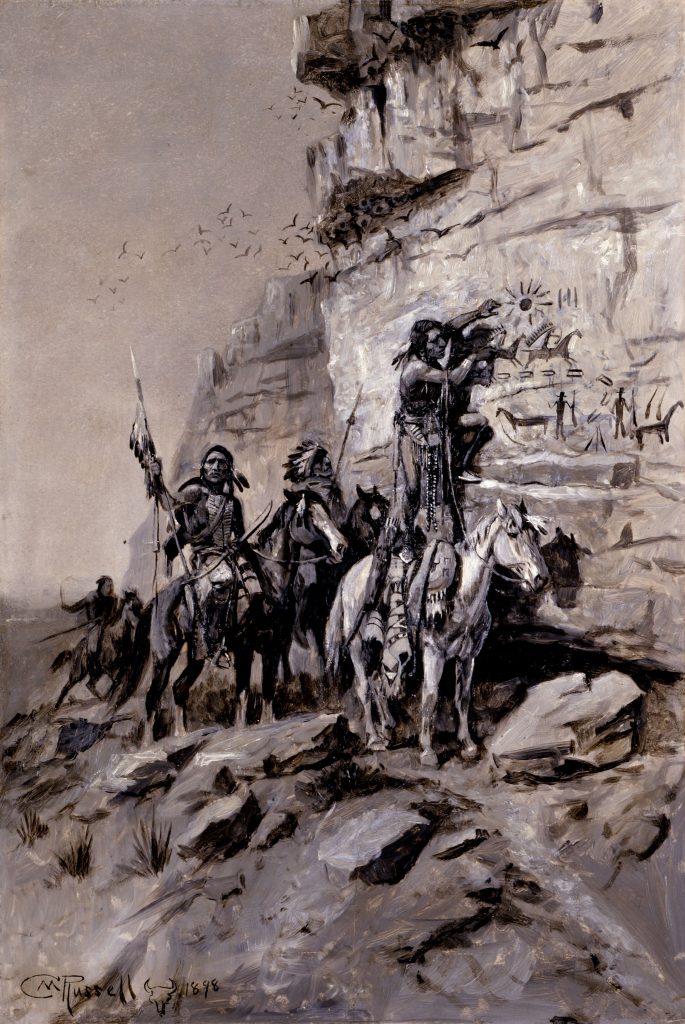
Image Source: https://imagesdanslapierre.mcq.org/en/discover/how/russell-pictograph-painter-encyclopedie_red-2/
Sources:
https://edsitement.neh.gov/lesson-plans/cave-art-discovering-prehistoric-humans-through-pictures
https://www.worldhistory.org/Chauvet_Cave/
https://www.bradshawfoundation.com/chauvet/fighting_rhino_four_horses.php
https://kids.britannica.com/students/article/rock-art/609420
http://besmarttakeart.weebly.com/artist-of-the-week/artist-of-the-week-2
https://en.wikipedia.org/wiki/Cueva_de_las_Manos
https://www.mentalfloss.com/article/577563/chauvet-cave-paintings-facts
http://imagesdanslapierre.mcq.org/en/discover/how
https://mindfuldrawing.com/2019/08/07/crossed-bison-of-lascaux-art-study-through-drawing/
October 8, 2021 at 5:15 am
Writing note from Patrick
Love the conversational style and free flow of information that kept me engaged all the way through. Only one sentence that could be reworked (In fact, do you know what’s in common between a 2 year old child born in 2019 and a cave dweller from 40 000 BCE? Both love handprint painting!). Also, are there commas in 40,000? Great job.